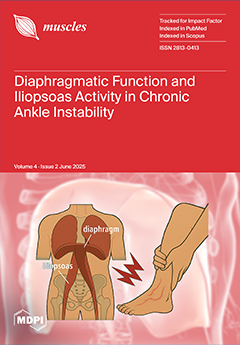The strength and conditioning literature examining neuromuscular physiology, bioenergetics, neuroendocrine factors, nutrition and metabolic factors, and the use of ergogenic aids, as well as physical and physiological responses and adaptations, have clearly identified the benefits of participating in regular resistance training programs for
[...] Read more.
The strength and conditioning literature examining neuromuscular physiology, bioenergetics, neuroendocrine factors, nutrition and metabolic factors, and the use of ergogenic aids, as well as physical and physiological responses and adaptations, have clearly identified the benefits of participating in regular resistance training programs for athletic populations, especially as it relates to improving muscular strength. Beyond evidence-based research, models for resistance training program implementation are of considerable value for optimizing athletic performance. In fact, several have been provided that address general to specific characteristics of athleticism (i.e., strength endurance, muscular strength, and muscular power) through resistance training over the decades. For instance, a published model known as the strength–endurance continuum that enhances dynamic correspondence (i.e., training specificity) in athletic populations by developing structural, metabolic, and neural capacities across a high-load, low-repetition and low-load, high-repetition range. Further models have been developed to enhance performance approaches (i.e., optimum performance training model) and outcomes (i.e., performance pyramid), even within specific populations, such as youth (i.e., youth physical development model). The ten, five, three, or 10-5-3 (TFT) model for strength and conditioning professionals synthesizes currently available information and provides a framework for the effective implementation of resistance training approaches to suit the needs of athletes at each stage of development. The model includes three key components to consider when designing strength and conditioning programs, denoted by the acronym TFT (ten, five, three). Over recent years, the model has gained much support from teams, coaches, and athletes, mainly due to the ability to streamline common knowledge within the field into an efficient and effective resistance training system. Furthermore, this model is distinctly unique from others as it prioritizes the development of strength–endurance, muscular strength, and muscular power concurrently. This paper explains the model itself and begins to provide recommendations for those interested in implementing TFT-based approaches, including a summary of points as a brief take-home guide to implementing TFT interventions. It is the author’s hope that this paper encourages other performance professionals to share their models to appreciate human ingenuity and advance our understanding of individualized approaches and systems towards the physical development of the modern-day athlete.
Full article






